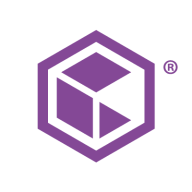

Commvault Cloud and Asigra are two popular cloud-based data management solutions. While both products offer distinct features, Asigra stands out with its exceptional functionality and simplicity, making it a preferred choice for many users.
Features: Commvault Cloud offers a comprehensive suite of data protection and management features, including backup, recovery, and data governance. Its flexible configurations and integration capabilities enhance its value. Asigra features a secure, agentless architecture and scalability, catering to diverse IT environments. Users also appreciate Asigra's efficient data recovery and robust security measures.
Room for Improvement: Commvault Cloud users often point to the need for a better learning curve, improved documentation, and more intuitive complex configurations. For Asigra, users seek enhancements in reporting tools, faster data recovery speed, and more detailed analytics for performance tracking.
Ease of Deployment and Customer Service: Commvault Cloud is noted for its intricate deployment process, requiring significant time but balanced by responsive customer support. Asigra, with its straightforward deployment and robust customer service, facilitates quicker setups and efficient problem resolution.
Pricing and ROI: Commvault Cloud is seen as cost-effective with a strong ROI, suitable for enterprises needing extensive data management solutions. Its flexible pricing structure meets various business needs. Asigra, although perceived as a higher upfront investment, delivers substantial ROI through operational efficiency and lower long-term costs, justifying its price through performance and capabilities.
| Product | Market Share (%) |
|---|---|
| Commvault Cloud | 6.0% |
| Asigra | 0.3% |
| Other | 93.7% |

| Company Size | Count |
|---|---|
| Small Business | 18 |
| Midsize Enterprise | 1 |
| Large Enterprise | 1 |
| Company Size | Count |
|---|---|
| Small Business | 57 |
| Midsize Enterprise | 24 |
| Large Enterprise | 81 |
Asigra makes award-winning enterprise backup and recovery software that leads the industry in secure, reliable, manageable and affordable data protection. Asigra Cloud Backup works in the cloud or on-premise, for everything from mobile devices to entire data centers.
Commvault Cloud is the ultimate cyber resilience platform built to meet the demands of the hybrid
enterprise. Beyond its core functionality of data backup and recovery across diverse workloads, including applications, databases, virtual machines, and files, Commvault Cloud stands out as a robust defense against ransomware. Going beyond backup, the platform integrates advanced data security features such as encryption, access control, and threat detection, safeguarding against unauthorized access and cyber threats.
With tools for data management, classification, and migration, businesses can optimize storage costs, enhance accessibility, and comply with regulations seamlessly. Boasting cloud integration with major providers like AWS, Azure, and Google Cloud, Commvault Cloud leverages the scalability and flexibility of the cloud for comprehensive data protection and management. The platform's automation capabilities streamline tasks, and its reporting and analytics features provide valuable insights into data usage, potential risks, and optimization strategies. Commvault Cloud is not just a security tool; it is a key component of cyber resilience, enabling organizations to not only protect against cyberattacks but also recover swiftly and minimize the impact of incidents. Elevate your cyber resilience strategy with Commvault Cloud.
We monitor all Backup and Recovery reviews to prevent fraudulent reviews and keep review quality high. We do not post reviews by company employees or direct competitors. We validate each review for authenticity via cross-reference with LinkedIn, and personal follow-up with the reviewer when necessary.